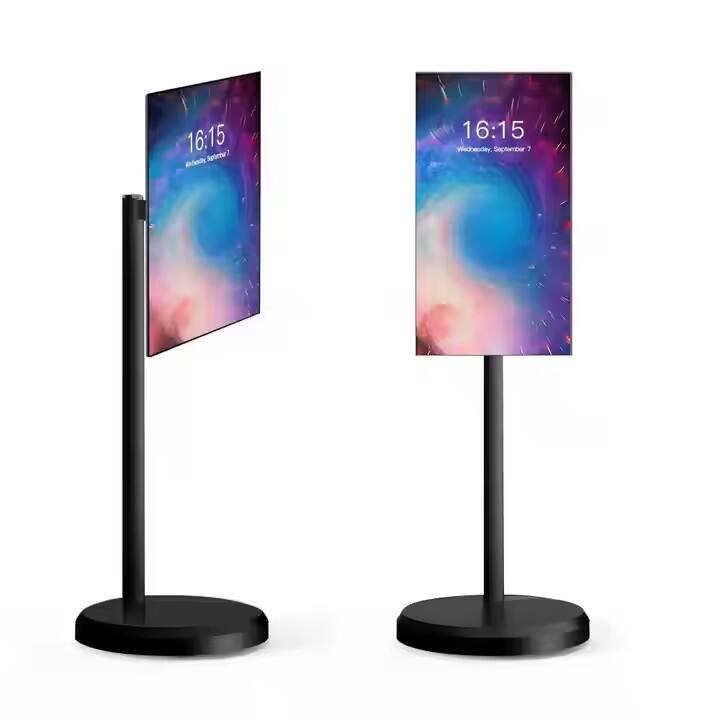Transforming Communication Through Modern Display Technologies
The landscape of visual communication is undergoing a revolutionary transformation as digital signage emerges as the cornerstone of modern advertising and information display. From bustling city centers to corporate environments, these dynamic display solutions are reshaping how businesses connect with their audiences. The traditional static billboards and printed posters are rapidly giving way to vibrant, interactive digital displays that capture attention and deliver measurable results.
As we witness this dramatic shift in display technology, it's becoming increasingly clear that digital signage represents more than just a trend – it's a fundamental change in how we share information and engage with consumers. This evolution is driven by advances in LED technology, cloud computing, and artificial intelligence, creating unprecedented opportunities for businesses to deliver targeted, dynamic content that resonates with their audience.
The Evolution of Display Technology
From Static to Dynamic: The Digital Revolution
The journey from traditional static displays to digital signage mirrors the broader digital transformation of our society. Early advertising relied heavily on printed materials, requiring significant time and resources for updates and offering limited engagement possibilities. The introduction of digital signage has eliminated these constraints, enabling real-time content updates and interactive experiences that were previously impossible.
Modern digital signage solutions incorporate advanced features such as touch sensitivity, motion detection, and environmental adaptability. These capabilities have transformed passive viewers into active participants, creating more meaningful engagement opportunities and stronger connections between brands and their audiences.
Technical Advancements Driving Innovation
The rapid evolution of display technology has been fueled by significant improvements in hardware capabilities and software solutions. High-resolution LED panels now offer superior image quality while consuming less energy than their predecessors. The development of powerful content management systems has made it easier than ever to create, schedule, and deploy engaging content across multiple displays simultaneously.
Cloud connectivity has revolutionized how digital signage networks are managed, enabling remote updates and real-time monitoring of display performance. This technological convergence has created more efficient, cost-effective solutions that deliver superior results for businesses of all sizes.
Business Applications and Implementation Strategies
Retail Revolution: Enhancing Customer Experience
In the retail sector, digital signage has become an indispensable tool for creating immersive shopping experiences. Interactive displays guide customers through product selections, showcase promotional offers, and provide detailed product information on demand. This technology has proven particularly effective in reducing perceived wait times at checkout counters and creating dynamic visual merchandising that adapts to customer behavior patterns.
Smart retailers are leveraging digital signage to create seamless omnichannel experiences, connecting their physical stores with their online presence. This integration allows for real-time inventory updates, personalized recommendations, and interactive product demonstrations that enhance the shopping experience.
Corporate Communication Enhancement
Within corporate environments, digital signage serves as a powerful tool for internal communication and brand reinforcement. From lobby displays that welcome visitors to information boards that keep employees updated on company news and performance metrics, these systems streamline information flow and enhance workplace engagement.
The flexibility of digital signage allows organizations to maintain consistent branding while delivering targeted messages to different departments or locations. Emergency notifications, real-time updates, and important announcements can be deployed instantly across entire networks of displays, ensuring critical information reaches all stakeholders promptly.

Future Trends and Innovations
Integration of Artificial Intelligence
The future of digital signage lies in its integration with artificial intelligence and machine learning capabilities. These technologies enable displays to analyze viewer demographics, adapt content in real-time, and deliver personalized experiences based on audience behavior patterns. Advanced analytics provide valuable insights into content effectiveness and viewer engagement, allowing for continuous optimization of display strategies.
AI-powered content generation and optimization will revolutionize how businesses create and manage their digital signage content, making it more relevant and engaging for viewers while reducing the resources required for content creation and management.
Sustainable Solutions and Energy Efficiency
As environmental concerns become increasingly important, the digital signage industry is focusing on developing more sustainable solutions. New display technologies incorporate energy-efficient components, smart power management systems, and recyclable materials. These innovations not only reduce operational costs but also help businesses meet their sustainability goals.
The integration of renewable energy sources and smart grid technologies will further enhance the environmental credentials of digital signage solutions, making them an increasingly attractive option for environmentally conscious organizations.
Frequently Asked Questions
What are the key benefits of implementing digital signage?
Digital signage offers numerous advantages including real-time content updates, reduced long-term costs compared to traditional signage, enhanced audience engagement through interactive features, and the ability to display dynamic, targeted content. It also provides valuable analytics and can be managed remotely, making it an efficient solution for modern businesses.
How does digital signage impact ROI for businesses?
Businesses implementing digital signage typically see improved ROI through increased customer engagement, reduced printing costs, enhanced brand awareness, and improved operational efficiency. The ability to quickly update content and target specific audiences also contributes to better marketing outcomes and higher conversion rates.
What factors should be considered when choosing a digital signage solution?
Key considerations include display quality and durability, content management system capabilities, network connectivity requirements, installation and maintenance costs, and scalability options. It's also important to evaluate the vendor's support services, warranty terms, and the solution's ability to integrate with existing systems and future technological advances.

